Biohabitats Projects, Places, and People
By Amy Nelson
Kendeda Building: “Groundbreaking Example of Sustainability, Leadership, and Innovation”
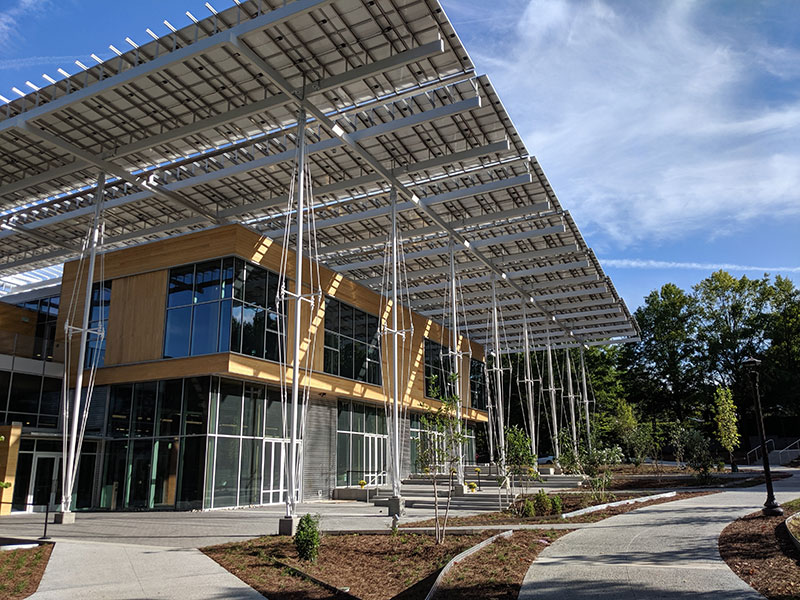
We are happy to share the news that Georgia Tech’s Kendeda Building for Innovative Sustainable Design has won the Atlanta Regional Commission’s 2019 Development of Excellence Award. The first project of its scale in the Southeastern U.S. to pursue the Living Building Challenge, the Kendeda Building is setting a new standard for regenerative design and showing what’s possible in a region known for temperature extremes and humidity. Not only is the building net-positive in terms of energy but so too in water, and we are honored to have designed its integrated water strategies.

A constructed wetland treats the building’s greywater before returning it back to the soil. Condensate from the HVAC system is collected and recycled for use in irrigating the building’s green roof, and landscaping and in recharging the aquifer. Rainwater is captured and treated for all uses (including drinking!) and stormwater is captured on site, where it can slowly infiltrate back into the soil through seepage areas, rain gardens, and permeable pavers. The Kendeda Building was toured by many members of the media during last month’s Greenbuild Conference in Atlanta, and word of its groundbreaking regenerative design is spreading.
The Kendeda Building is not the only project we’ve been involved with that has been in the news lately. Veridian County Farm, an Ann Arbor, Michigan project pursuing Living Community Challenge—and for which we are ecological consultant—was featured on Michigan Public Radio. The project is being led by THRIVE Collaborative, a development firm with a mission to create ecologically restorative housing, and Avalon Housing, a non-profit that creates healthy, safe, and inclusive housing as a long-term solution to homelessness. As ecological consultant on the integrated planning and design team, Biohabitats is ensuring that the project improves the local ecology and balances the community’s water demand with onsite harvesting and reuse.
Branching Out at Mid-Atlantic Stream Restoration Conference

Last month, the annual Mid-Atlantic Stream Restoration Conference was held in Baltimore, Maryland. The conference was a great opportunity for the staff from our Chesapeake/Delaware Bays Bioregion to connect and share knowledge and lessons with other restoration practitioners. In addition to delivering several talks, Biohabitats led a sold-out field trip to the Bacon Ridge Stream, the site of the first stream restoration in Maryland to use only wood, sourced on site, for structure. Tour participants were able to visit two separate restoration sites along the stream, one complete and one in progress. Along the way, senior ecologist, Joe Berg, and senior engineer, Doug Streaker, shared details about the various structures, techniques, challenges, and joys of this groundbreaking work.
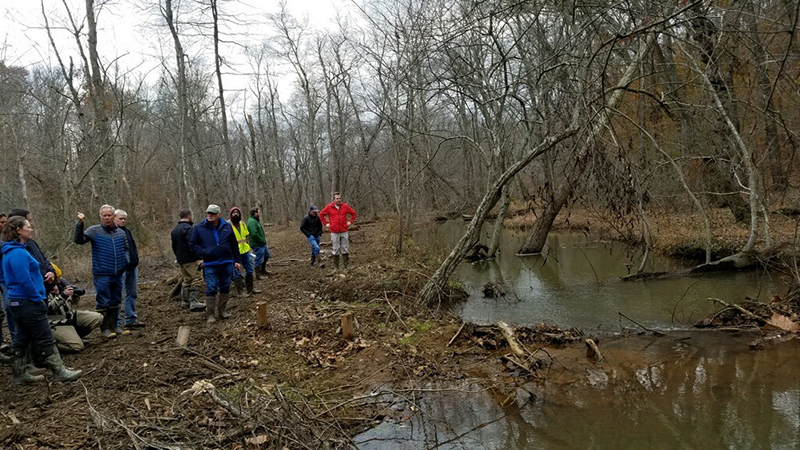
A Flood of Challenges? No Problem.
In 2013, a severe storm dumped 10-20 inches of rain along Colorado’s northern Front Range, causing devastating flooding in the foothills. Many waterways were altered and degraded by the flood, including Left Hand Creek, which suffered extreme erosion, deposition, and habitat degradation. Back in 2016, we worked with AECOM to help the Central Federal Lands Highway Division of the U. S. Department of Transportation restore and protect several sections of the creek that flow alongside a main road leading in and out of the mountains. This year, as part of a collaborative design-build team led by Left Hand Excavating, Biohabitats, GEI, and Wright Water Engineers, we helped the Left Hand Watershed Center restore several more reaches along Left Hand Creek in the canyon.
In addition to the constraints that come along when working within a steep canyon, the project had two rather gnarly challenges. At one site, a four-foot concrete wall of an existing diversion structure was seriously blocking fish passage. At another, where the canyon opens, so much sand, gravel, and cobble had been deposited from the flood that it “looked like a moonscape” with no vegetation, according to Senior Fluvial Geomorphologist, Vince Sortman. But we love a good challenge! At the site with the diversion structure, we created a rock ramp/cascade with pocket water to enhance fish passage on the downstream side of the dam.
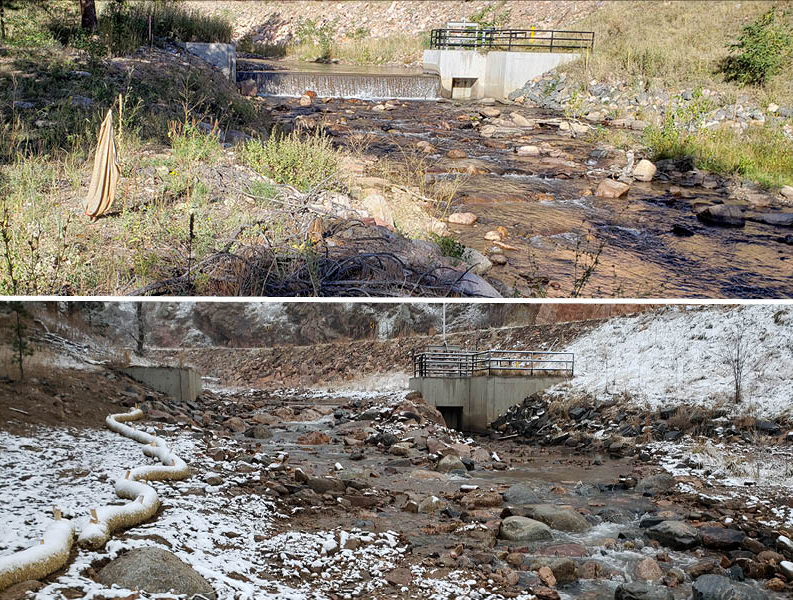
On the upstream side of the structure we installed a large boulder vane which allows low flow to concentrate toward the headgate to ensure that water is available to the Left Hand Ditch Company. During high flows, the vane concentrates water toward the fish ramp to ensure that most of the sediment is transported downstream rather than depositing at the diversion structure.
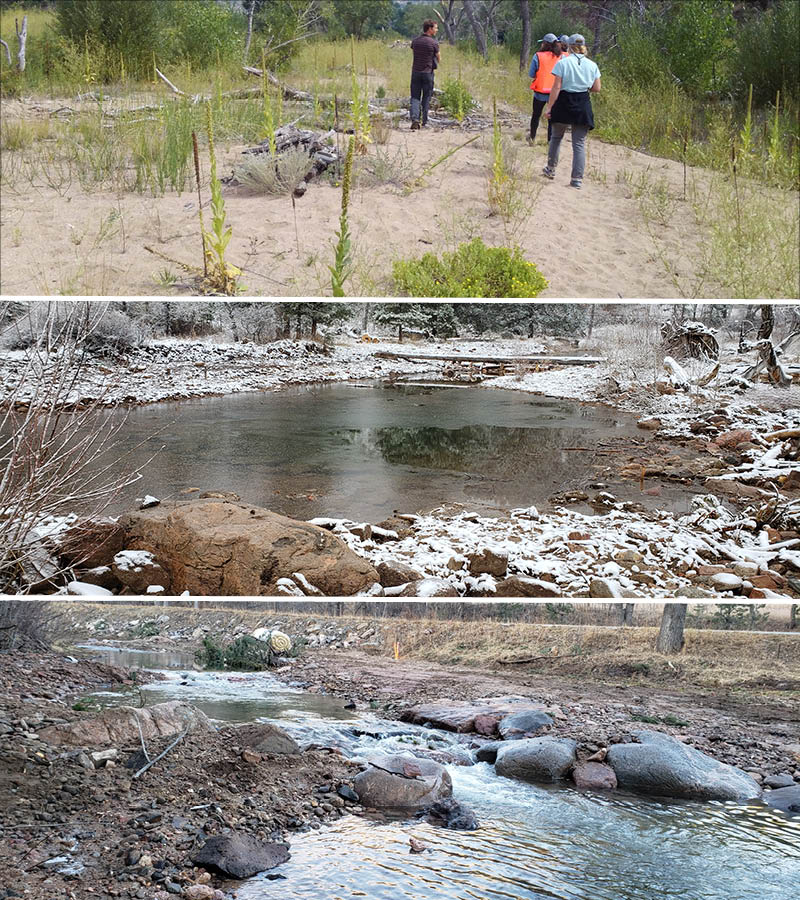
At the downstream site where the canyon opens up, we constructed beaver ponds on a secondary channel to rehydrate the floodplain. Since deposition and incision on the main channel left the floodplain high and dry, we moved about 20,000 cubic yards of sediment deposits along the creek and created low benches where vegetation could grow. We finished construction last month and so far things look great!
ASLA Awards: What an Honor!
Last month, the American Society of Landscape Architects announced the winners of its 2019 Honor Awards. We are honored to have collaborated on three award-winning projects.

The landscape design at Glenstone, a museum of modern and contemporary art in Potomac, Maryland, received an Honor Award for General Design. As a subconsultant to PWP Landscape Architecture, Biohabitats contributed to the design of the museum’s 18,000-square-foot, glass enclosed water court, which is fed by rainwater harvested from rooftops.
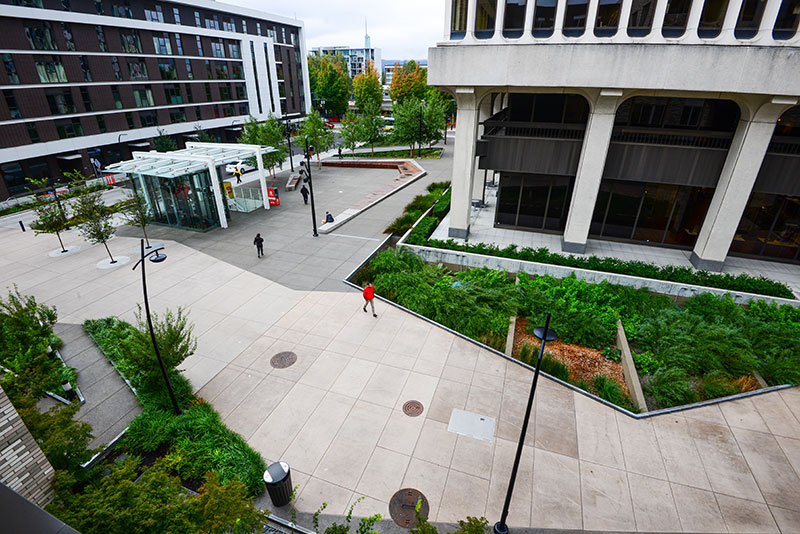
The Portland, Oregon LEED Platinum community Hassalo on Eighth received an Honor Award for Residential Design. In collaboration with landscape architects PLACE, GBD Architects, and Glumac, Biohabitats designed NORM (Naturally Organic Recycling Machine), the community’s visibly prominent wastewater treatment and reuse system. We also contributed to the design other water features within the site.
Studio Outside’s master plan for the Bernheim Arboretum and Research Forest in Clermont, Kentucky received an Honor Award for Analysis and Planning. Biohabitats contributed environmental engineering expertise, and helped the planning team identify opportunities for stormwater retrofits, low impact BMPs, and ecological restoration.
Design Competition Opportunity
We have exciting news to share! In the article, “Equity in Urban Ecological Planning,” which appeared in the Spring Equinox issue of Leaf Litter, we reported on the planning of a public park in the marsh-front community of Scanlonville in Mt. Pleasant, South Carolina. Subjected to decades of gentrification and disempowerment, the historic Settlement community fought hard to reclaim a triangular parcel of land and transform it into a community park.

Here’s where you come in. The East Cooper Civic Club of Scanlonville, which is leading that effort, is now asking: “How can the design of a public space celebrate the battles and triumphs of the community founders, offer homage to the region’s cultural history, and create a deeper shared understanding of Scanlonville?” If you think you might have an answer, enter their design competition! With judges from Harvard, Columbia, Clemson, and Hood Design Studio, this competition is a great opportunity and an exciting challenge for landscape architects. After registration opens January 10, awards will be announced on Juneteeth 2020.
Places
January 29-30, Delaware Wetlands Conference, Wilmington Delaware. If you are attending, keep an eye out for Senior Ecologist, Mike Thompson and Practice Leader, Ed Morgereth.
Feb 4-6, 2020, River Restoration Northwest’s 2020 River Restoration Symposium, Stevenson, Washington. Stream Restoration Ecologist and Construction Manager, Matt Koozer will attend this annual forum for researchers, scientists and field professionals to share knowledge and collaborate on the latest river restoration practices and research.
February 24 – 27, 2020, ESRI Geodesign Summit, Redlands, California. Don’t miss “Geodesign for Urban Ecological Planning” a talk by GIS Manager, Chris Rehak and Senior Landscape Architect/Urban Ecologist Aiman Duckworth.
February 28, Future Desert, Phoenix, Arizona. Practice Leader Erin English will help lead a water discussion during this full day workshop, where participants will learn how they can use the built environment as an instrument for transformational change.
People
Biohabitats Senior Engineer Pete Muñoz works tirelessly to create a more equitable and sustainable future. Last month, Pete’s hard work and dedication was recognized when he was named a “CityMaker” by EcoDistricts, a nonprofit organization dedicated to advancing a new model of urban regeneration and community development rooted in social, economic and ecological innovation.
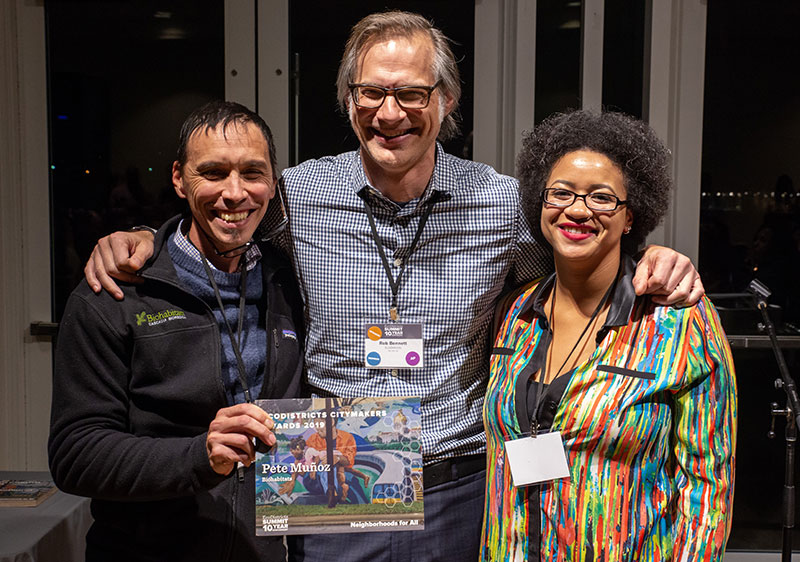
“The EcoDistricts movement is led by an inspiring number of urban changemakers. The work is hard and takes time. The work is critical to the future of our cities, communities and planet,” said EcoDistricts CEO Rob Bennett, in recognizing Pete, other sustainable development leaders, and catalytic district- and neighborhood-scale projects. “I’m thrilled to acknowledge their relentless effort and commitment, much of which is done quietly and behind the scenes on behalf of their communities.”
Congratulations to Senior Engineer, Mike Lighthiser, who can now add “Registered Professional Engineer in Oregon” to his lengthy list of credentials.
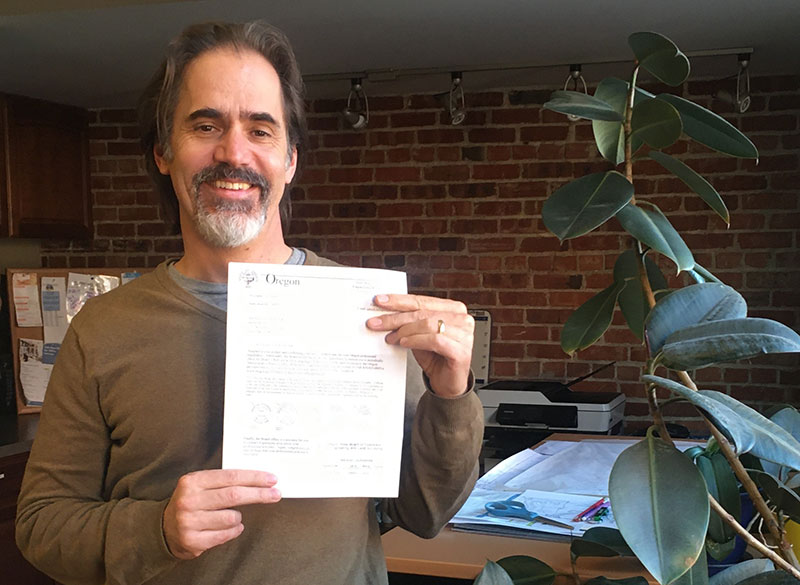
The past few months have been exciting for Biohabitats Biomimicry Fellow, Elena Stachew. In September, she was one of 500 young people chosen in the world to attend the first ever United Nations Youth Climate Summit. She represented Cleveland, Northeast Ohio and the Midwest-Great Lakes region in the area of ecological restoration and coastal resilience. Elena applied to attend the Summit through the Cleveland, Ohio chapter of Global Shapers Community, a youth initiative of the World Economic Forum. At the Summit, Elena had the opportunity to participate in conversations on climate finance with the World Bank, meet and connect with young climate action leaders from Kazakhstan, Vanuatu, Romania, The Netherlands, India, Oman and Croatia. She also had the opportunity to listen to Greta Thunberg, UN Secretary-General Antonio Guterres and many youth leaders give declarations, announcements and speeches demanding for action by our global leaders. Elena and other youth participants were also able to ask tough climate action questions of the Chief Environmental Officer of Microsoft, the CEO of Google X, the President of the Republic of the Marshall Islands, the Chair of the Elders, the President of Austria and the Governor of the State of Washington.
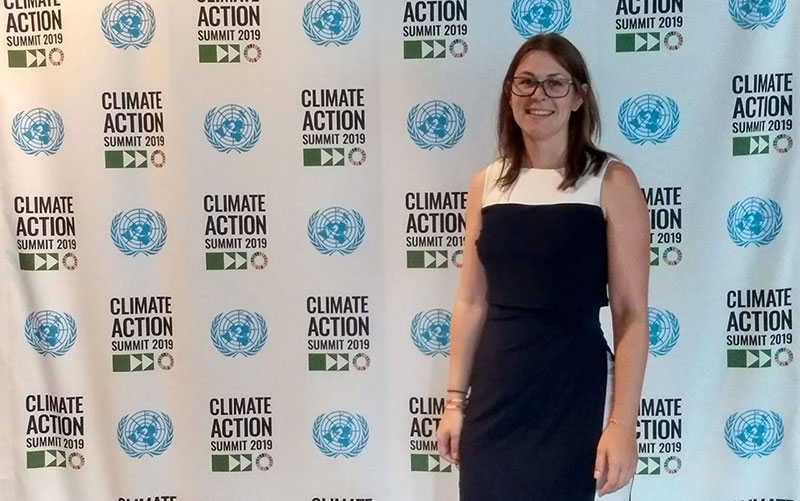
Just a few weeks after attending the Summit, Elena officially became a PhD candidate, when she successfully defended her research, which applies a holistic biomimicry approach to the coastal protection along the shores of Lake Erie. Elena’s work explores the question, “How does nature work with environmental forces and prevent erosion?” to discover solutions based on a natural model native to Lake Erie: root wads. We look forward to keeping you posted on Elena’s work!
Every quarter, Biohabitats awards one staff member with the Golden Acorn, an award recognizing an employee who embodies the Biohabitats mission to “Restore the Earth and Inspire Ecological Stewardship.” The gold color symbolizes purity of purpose in protecting and defending nature, and the acorn symbolizes strength of resolve. Nominees are submitted by the staff. Our most recent Golden Acorn winner was Shayla Woodhouse.
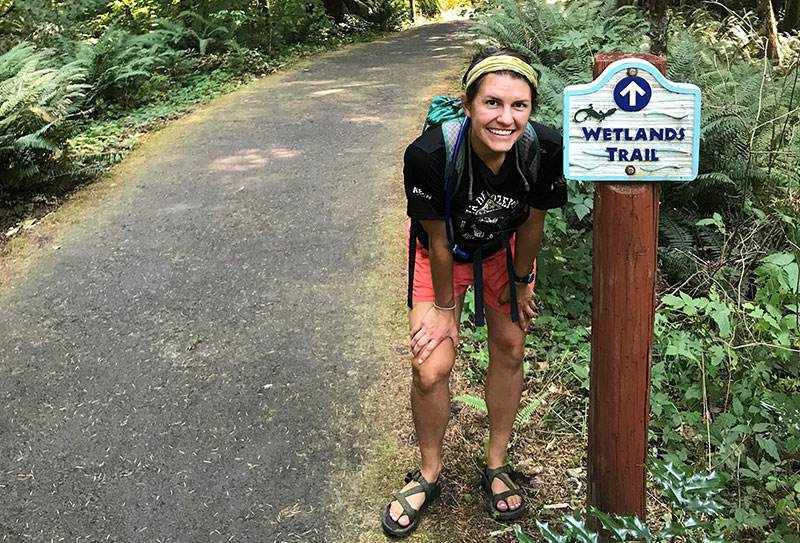
Recipients of the Golden Acorn get to direct a monetary donation to the non-profit organization of their choice. Shayla directed her donation to The Mountain Center, a Santa-Fe based nonprofit educational and therapeutic organization that promotes personal discovery and social change among youth, families and groups through the use of creative learning experiences in wilderness, community and cultural environments.
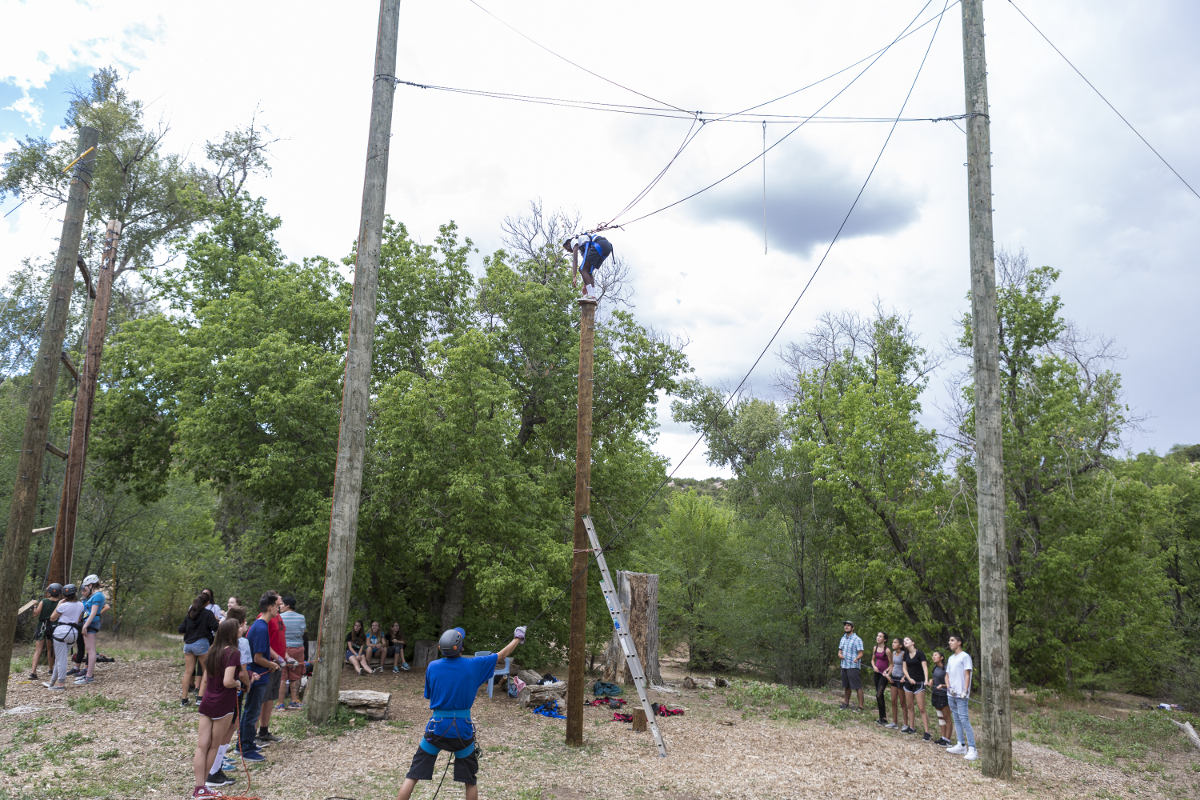
“I’m really happy that a program like this is available to the community,” said Shayla. “The Mountain Center provides a space and opportunity for people from all backgrounds to engage in outdoor activities such as rock climbing or backpacking all while building personal skills such as problem solving and self-confidence.”
